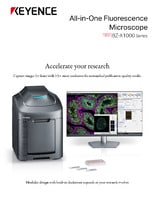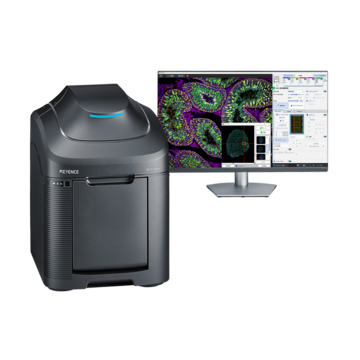Fluorescence Microscopes
High sensitivity across short and long wavelengths
For products mainly made of fibrous or similar materials, the aggregate state between fine products is maintained with an adhesive (a binder).
To maintain the aggregate state, it is necessary for adhesive to be applied uniformly and dispersed entirely in a tangling manner. However, because fibrous materials and adhesives are generally white or transparent, it is difficult to visualize their application condition with an optical microscope.
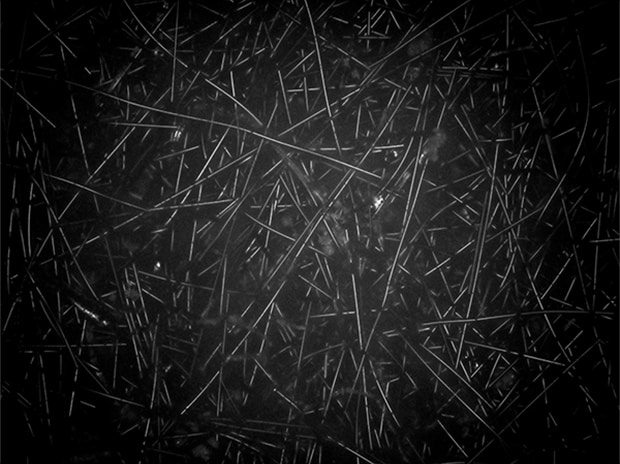
Activated carbon fibers
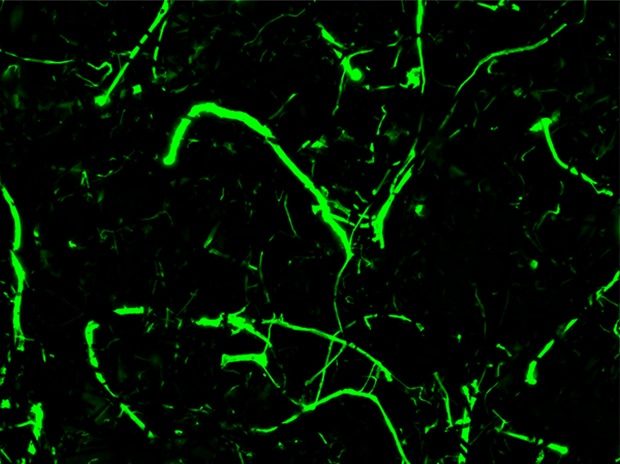
Binder
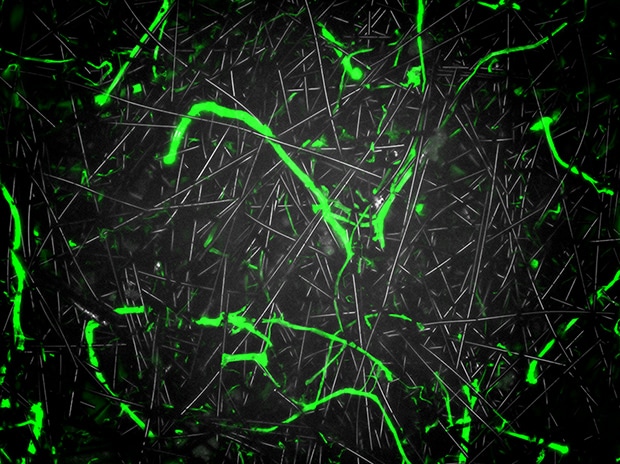
Observation of how activated carbon fibers are tangled with binder
The blending ratio is determined to be 7% using the quantitative analysis function!
Using the All-in-One Fluorescence Microscope BZ-X
- Fluorescence observation enables visualization and quantification of the application condition.
- As most adhesives are resin, they produce fluorescence when exposed to light (fluorescence) having only a specific wavelength range.
- If different fluorescent wavelengths are produced by fibrous materials and adhesive, it is possible to distinguish them and visualize the application condition even if doing so is not possible with the human eye.

